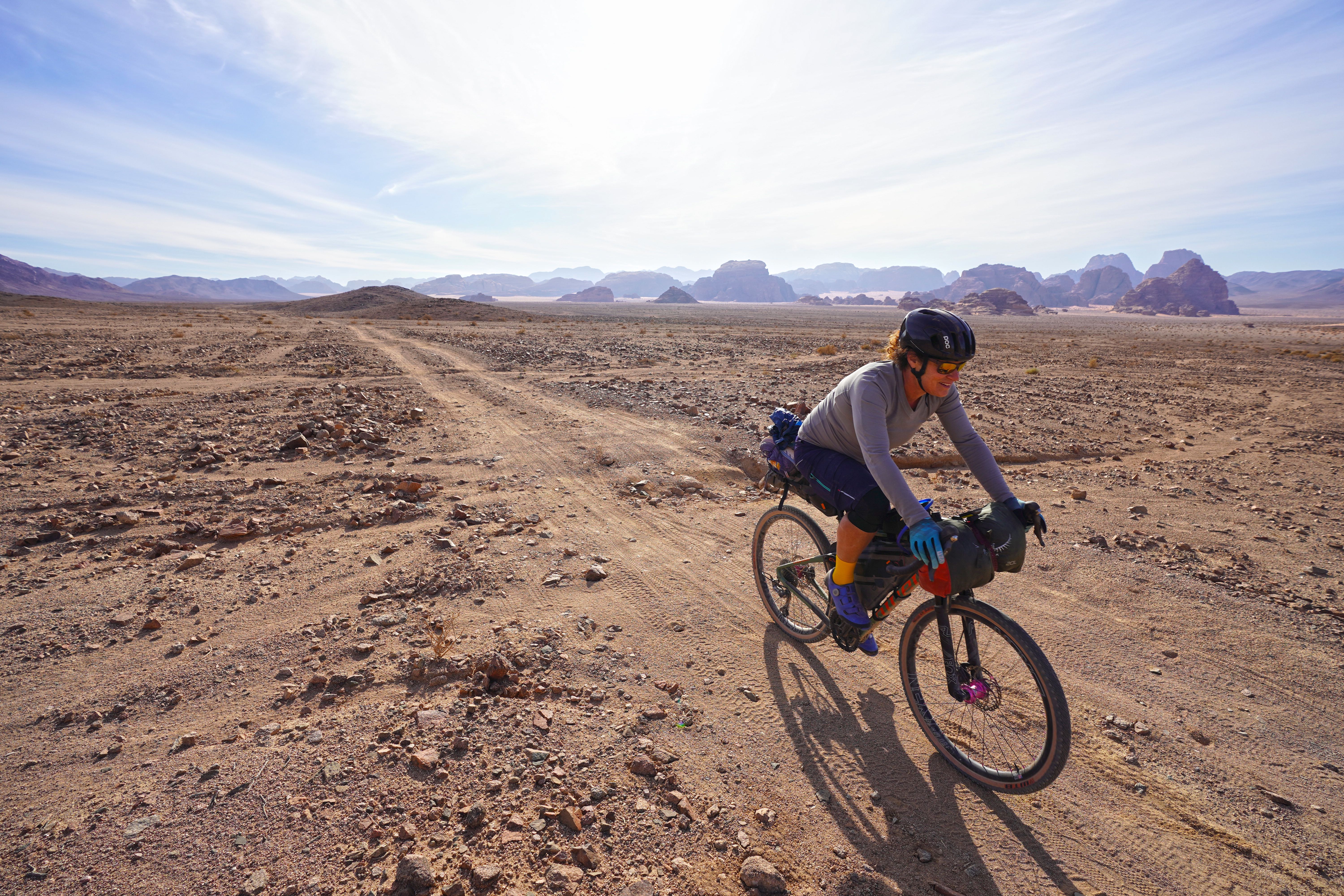Advnture Verdict
For high-output activities in the mountains, especially backcountry skiing in varied conditions, the Ortovox Mesola shell is the jacket I reach for. I love how it looks, feels, fits and performs. It strikes the perfect balance of fitted and freeride, and it has softshell-level breathability with hardshell protection in key areas.
Pros
- +
Ultra-breathable
- +
Weatherproof
- +
Light and compact
- +
Stretchy
- +
Merino content keeps it smelling fresh
Cons
- -
Not suited for the most heinous conditions
- -
No pass pocket
- -
Fits small, so consider sizing up
You can trust Advnture
Meet the reviewer
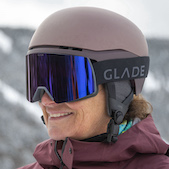
Vermont-based writer, photographer and adventurer Berne reports on hiking, biking, skiing, overlanding, travel, climbing and kayaking for category-leading publications in the US, Europe and beyond. In the field, she’s been asked to deliver a herd of llamas to a Bolivian mountaintop corral, had first fat-biking descents in Alaska, helped establish East Greenland’s first sport climbing and biked the length of Jordan. She’s worked to help brands clean up their materials and manufacturing, and has had guns pulled on her in at least three continents.
Ortovox Mesola ski jacket: first impressions
Slipping into the Ortovox Mesola ski jacket for the first time, I was struck by the jacket’s lightness, the softness of the fabrics and the cool details, including the subtle hits of color on the inside and outside that gave it some personality and sass.

• List price: $400 (US) / €390 (EU)
• Gender specification: Men’s & Women’s versions available
• Sizes: Men’s: S-XXL; Women’s: XS-XL
• Materials: Outer: polyamide with polyurethane membrane; Inner: polyamide (79%), virgin Merino wool (11%) & elastane (10%)
• Weight: Women’s: 386g; Men’s: 415g
• Colors: Women’s: Ice Waterfall & Autumn Leaves / Deep Ocean; Men’s: Dirty Daisy
• Compatibility: high alpine, mountaineering, freeride & ski touring
I was also impressed by its simplicity. Two oversized chest pockets are the only storage. This jacket is designed to be worn with a ski pack, so where it will be under a hip belt when you’re out skiing, there’s nothing there that would be uncomfortable or cause pressure points.
The pull-to-adjust hood is helmet-sized, while a drawcord at the waist let me tighten the hem to block out the weather when I wasn’t wearing a pack. And the underarms have long pit zips to ensure that even on the warmest days I won’t overheat.
Most of the jacket has a brushed and textured inside. It felt nice when I put it on – a lot cozier than when I put on a pure waterproof breathable shell, but it also offers more comprehensive weather protection than a simple softshell jacket.
But how would the Ortovox Mesola perform on the slopes, compared to the best ski jackets for men and the best ski jackets for women currently on the market? I’ve been testing it to find out.
Ortovox Mesola ski jacket: materials and design
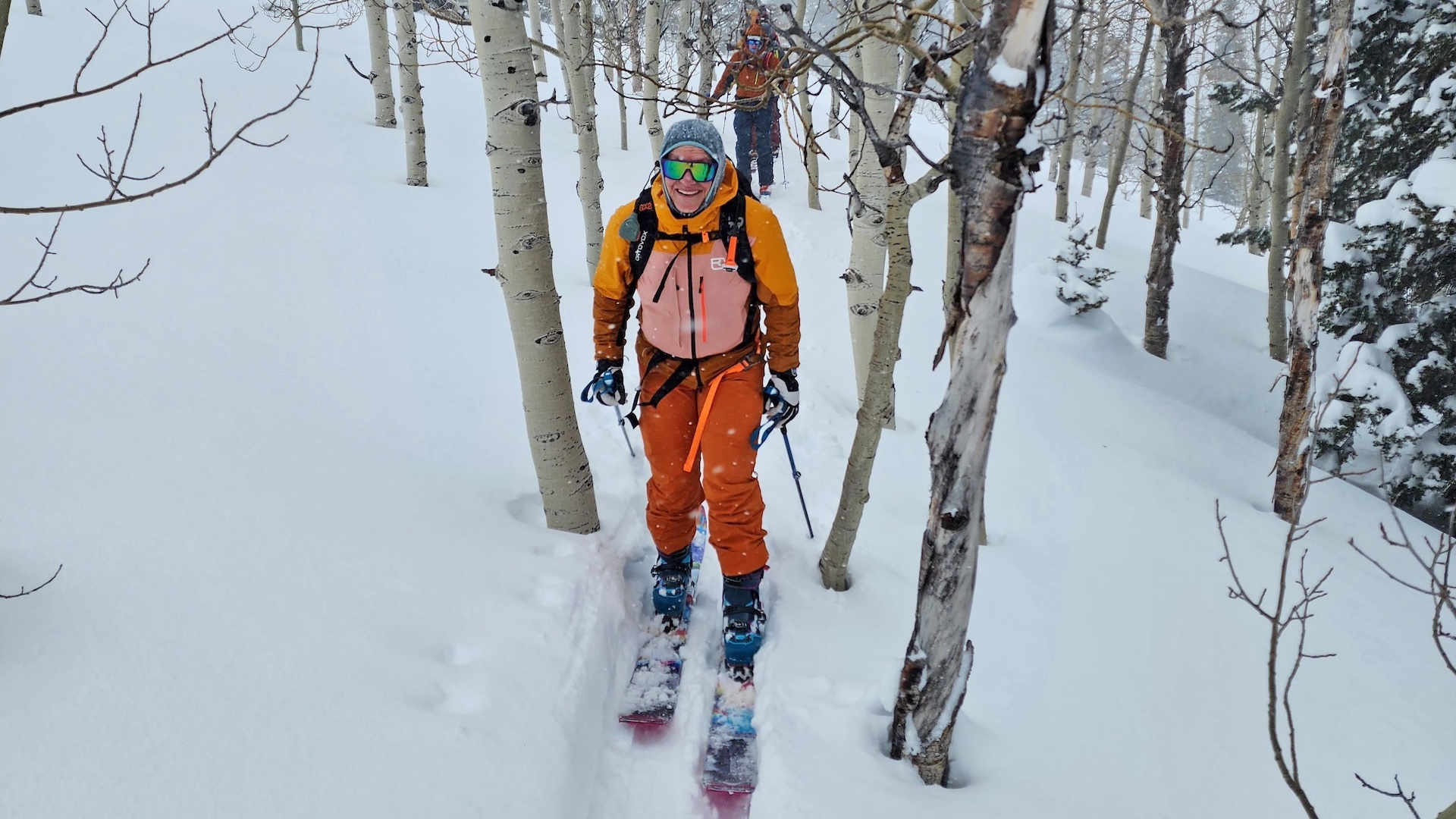
The Ortovox Mesola stands out for its artful combination of hardshell and soft shell materials, which join forced to help mountaineers, skiers and riders temperature-regulate, while protecting them from winter weather.
The lower back, underarms and sides of the Mesola are made from a Merino-backed softshell that’s stretchy, and water- and wind-resistant. The rest of the jacket has a waterproof breathable membrane that’s a lot like Gore-Tex but significantly more breathable. Even the waterproof breathable portions of the Mesola jacket have a Merino backer that makes it feel much more cozy and comfortable than a standard shell, partly because this jacket is so adept at managing sweat.
All the latest inspiration, tips and guides to help you plan your next Advnture!
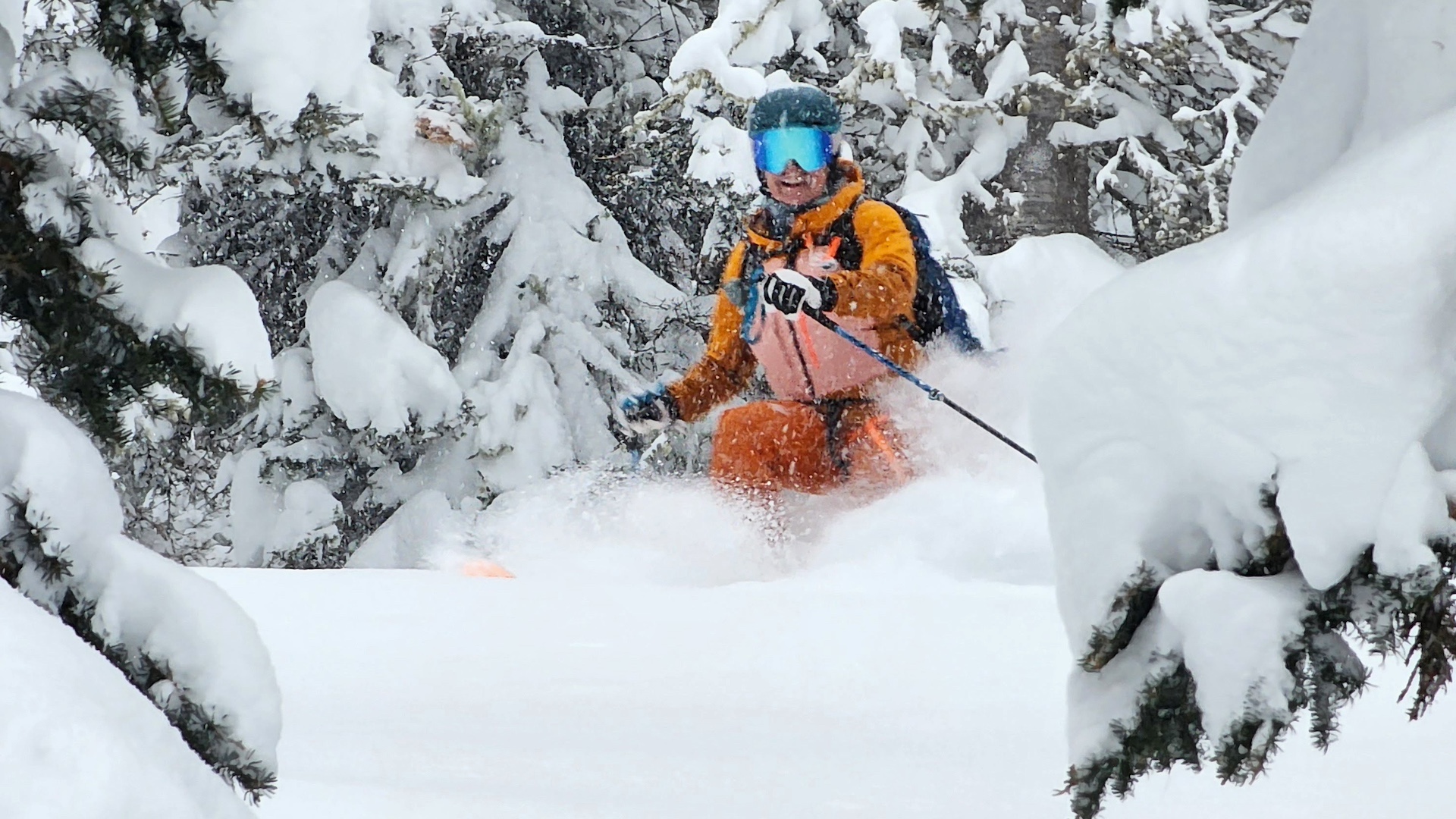
Ortovox’s signature material is Merino wool, a fabric the brand uses in most, if not all, of their apparel, including in places you wouldn’t expect it – the backer on a waterproof breathable membrane, for example. They only use sustainable Merino from certified, monitored, ethical sheep farms.
Merino controls odor naturally, so this jacket didn’t get stinky even after I skinned in it all winter without washing it. Merino is also great at temperature regulation and moisture management, which further enhances this jacket’s incredible ability to adapt to conditions and be protective and warm but not sweaty.
The Mesola is climate-neutral, and produced with minimal environmental impact. Ortovox offset any carbon that making the jacket generates that the company can’t eliminate in production.
Ortovox Mesola ski jacket: on the slopes

The Ortovox Mesola was my go-to jacket for ski touring this winter, and I can’t say enough good things about it. During a week ski touring Wyoming’s Teton Pass and Grand Teton National Park, when 68 inches of snow fell in seven days, I wore this jacket every day for uphills and downhills.
That kind of versatility saved me time at transitions. While others were layering up, I had more time for snacking, drinking and taking photos before my crew was ready to drop. I’d unzip it partially for skinning uphill, then zip it all the way, and put the hood on when the wind was blasting.
It’s not as warm as a pure hardshell, however. So if my crew was taking a longer break on a really cold day, I’d throw a down jacket over this jacket until we were ready to go. The fit is comfortable – not flappy or binding. And the jacket has some gripper elastic at the waist to keep it in place.
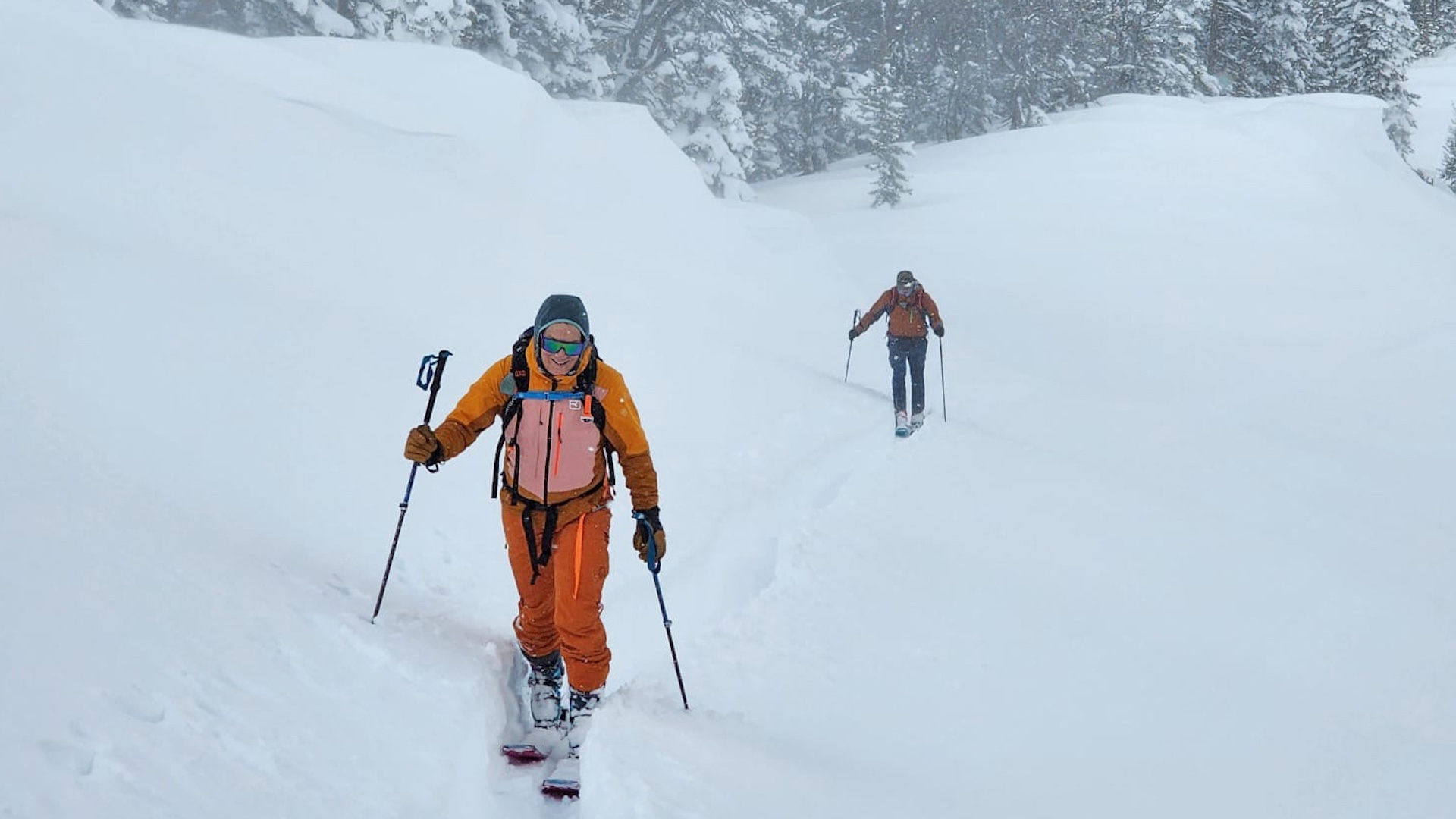
I wore this jacket in dry and sunny conditions as well as snowstorms. Its waterproof panels did their job and kept me dry even when I was out for hours in heavy snowfall. When my body heat melted the snow, it didn’t get me wet. The waterproof breathable panels made it easier to brush snow off my arms and shoulders than if I was wearing a pure softshell jacket.
Elastic binding at the wrist instead of velcro tabs ensure the sleeves of this jacket are snag-free when pulling on ski gloves. I wore my warmer gloves over the sleeves, but thin and lightweight skinning gloves slid under the cuffs without a struggle.
And I really loved the oversized chest pockets, which are long and spacious. Both sides are large enough to hold a max-sized iPhone in place where I could get to it quickly for shooting photos on the slopes.
Back at home in Vermont, the Ortovox Mesola has been a great spring skiing jacket for both on-piste and off. The softshell panels prevent it from getting sweaty inside, which is inevitable with pure hardshells. And it has enough wind protection that even on the lift, in warmer temps it’s a great choice.
Vermont-based writer, photographer and adventurer, Berne reports on hiking, biking, skiing, overlanding, travel, climbing and kayaking for category-leading publications in the U.S., Europe and beyond. In the field, she’s been asked to deliver a herd of llamas to a Bolivian mountaintop corral, had first fat-biking descents in Alaska, helped establish East Greenland’s first sport climbing and biked the length of Jordan. She’s worked to help brands clean up their materials and manufacturing, and has had guns pulled on her in at least three continents.

